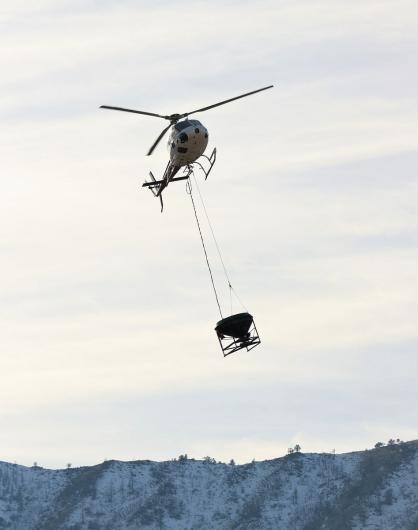BLM takes to the skies to restore sagebrush habitat
KLAMATH FALLS, Ore. — This December, the Bureau of Land Management will take to the skies to restore native plant communities across more than 750 acres in Klamath County. Weather permitting, the BLM will launch aerial seeding in the Golden Fire area southeast of Bly Mountain Pass and in sagebrush restoration sites near Bonanza (Harpold Ridge and Windy Ridge 4).
The goal of these treatments is simple but powerful: revive native shrubs, grasses, and wildflowers that thrive in southern Oregon. Re-establishing native plants helps slow the spread of invasive annual grasses such as cheatgrass, medusahead rye, and North African grass. To prepare, BLM staff sprayed invasive species to give native seeds the best chance to grow strong.
“These restoration efforts are multi-year projects focused on improving mule deer winter range and sagebrush steppe habitat,” said Kerry Johnston, botanist at the Klamath Falls Field Office. “Healthy sagebrush ecosystems benefit countless wildlife species. By re-establishing native plants and reducing invasive grasses, we’re setting the stage for long-term habitat resilience.”
What’s in the seed mix? The aerial treatments will include a diverse mix of locally adapted species, including mountain big sagebrush, bitterbrush, Idaho fescue, squirreltail, Sandberg’s bluegrass, bluebunch wheatgrass, Great Basin wildrye, yarrow, sulphur buckwheat, biscuitroot, and tapertip hawksbeard.
What to expect:
- Maps will be posted along main roads entering project areas.
- Treatments may take up to two weeks, depending on weather.
- Visitors may notice aircraft activity during operations.
For more information, contact Kerry Johnston, KFFO Botanist, at 541-885-4136.
The BLM manages about 245 million acres of public land located primarily in 12 western states, including Alaska, on behalf of the American people. The BLM also administers 700 million acres of sub-surface mineral estate throughout the nation. Our mission is to sustain the health, diversity, and productivity of America’s public lands for the use and enjoyment of present and future generations.

